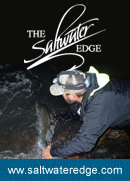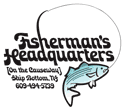Editor’s note #1
Surfcaster’s Journal Magazine if offering one day “24 hour free pass” to the magazine till Friday 4 pm. Go to the subscribe page and pick free access option
Editor’s note #2
This is a special contribution to the SJ Blog by Mr. Charles Witek
Striped Bass: Where do we go from here?
By now, most of the folks on the striper coast have heard something about what happened at last month’s ASMFC meeting. Unfortunately, the news coming out of the meeting was a little confused, and if you weren’t paying really close attention, you might not have completely understood what happened and what may—or may not—happen in the future.
There was good news. The majority of the commissioners on the Striped Bass Management Board clearly recognized that there are problems with the stock, believe that harvest levels have to be reduced and have begun the process of making that happen.
There was also bad news. The Management Board, in a decisive vote, decided to do nothing to prevent overfishing from occurring next season, some commissioners made it clear that they had no intention of supporting the harvest reductions that biologists believe are needed, and there is plenty of time between now and next August, when new regulations would probably be finalized, for those dissenting commissioners to derail the current process.
To understand where we’re going, we should probably take a quick look at where we’ve been. According to the best available data, the striped bass female spawning stock biomass—the abundance of mature female fish—peaked in 2004, then began a steady and at times steep decline. Striped bass anglers up and down the coast noticed the decline, which seemed particularly severe in northern New England; by 2007 or 2008, calls for additional restrictions on striped bass harvest began to be heard at ASMFC’s Striped Bass Management Board. In March 2011, after a motion made by Paul Diodati of Massachusetts and seconded by Gene Kray of Pennsylvania, ASMFC began to move forward with an addendum that would respond to the decline in abundance by reducing coastwide harvest. That addendum would have been released to the public after the August 2011 meeting; however, a motion by A.C. Carpenter of the Potomac River Fisheries Commission, which was seconded by Pat Augustine of New York, postponed such release until November, when a stock update would be available to the management board. However, when the November meeting rolled around, Pat Augustine of New York moved to take no action on such pro-conservation addendum until after the benchmark stock assessment was released in the second half of 2012. Mike Johnson of North Carolina seconded Augustine’s motion and, on a 9-6 vote, the motion to delay any harvest reduction was adopted by the management board.
The benchmark assessment was released to the management board in August 2012. That assessment confirmed what so many striped bass anglers feared, that the population was truly in a serious decline. Female spawning stock biomass had already fallen below the biomass target, and there was a good chance that it would also fall below the biomass threshold—meaning that the stock would, by definition, be “overfished”– by 2015 or 2016, unless managers adopted meaningful restrictions on harvest. The assessment also confirmed what many of us had been arguing since the stock was declared “recovered” in 1995: The current fishing mortality reference points were too high, and the current 2 fish bag limit and 28” minimum size imposed on the coastal fishery by ASMFC allowed too many fish to be killed. Under the current fishery management plan for striped bass, the fishing mortality target, F=0.30, allows the removal of about 26% of the adult population each year, while the fishing mortality threshold, F=0.34, defines “overfishing” as removing more than about 29% of that population. The latest stock assessment determined that the fishing mortality target should be reduced to F=0.180, about a 40% reduction in the allowable kill, which would result in roughly 16% of the adults being harvested in any year, and that the overfishing threshold be set at F=0.219, equivalent to the removal of about 19% of the adult population—well below what had previously been the target mortality level. Further, the assessment predicted that, unless current harvest levels were reduced significantly, it is a virtual certainty that the striped bass stock will be overfished in 2014.
The conclusions contained in the stock assessment quickly spread throughout the striped bass fishing community, resulting in a host of reactions. Most serious striped bass anglers recognized the problems being faced by the stock, and supported a harvest reduction that would take effect as soon as possible. However, there was some disagreement about how any such reduction should be structured; some proposed specific changes in the current rules (e.g., adopting a coastal standard of 1 fish at least 32 inches in length), others argued for a slot limit to protect the big females while others raised the perennial issue of conserving bass by ending commercial harvest (which, in some anglers’ minds, included harvest by party boats and perhaps other for-hire vessels). In making such recommendations, many anglers missed a very important point: Before we could intelligently discuss changing regulations, we had to first convince ASMFC’s Striped Bass Management Board to incorporate the new fishing mortality reference points in the striped bass management plan. Until that was done, all of the other discussions were purely academic. And we could be sure that there were people out there who would do their best to prevent any harvest reduction from taking place.
The meeting of the management board took place on October 29, and played out in the manner that most seasoned ASMFC-watchers expected. The conclusions contained in the stock assessment were taken seriously by a majority of the board. That majority was led by representatives from New England, who have long borne the most serious impacts of the current decline, and clearly supported conservation measures. However, the pro-conservation majority was opposed by a minority, predictably featuring Tom Fote, a governor’s appointee from New Jersey who has a long history of opposing any conservation measures that reduce the recreational kill. But Massachusetts salt water fisheries director Paul Diodati handily dismissed the anti-conservation zealots by observing, in effect, that anyone who couldn’t understand the problems besetting the striped bass stock probably shouldn’t be sitting at the management board table. That was undoubtedly an accurate observation, although it was probably lost on the anti-conservation crowd.
Diodati made a motion that directed ASMFC to initiate an addendum which would incorporate the new fishing mortality reference points into the striped bass management plan, and would also have reduced harvest for the 2014 fishing year by cutting the recreational bag limit to one fish, retaining the 28 inch minimum size and imposing proportionate reductions on commercial landings. His motion was seconded by Richard White of New Hampshire. However, the idea of imposing interim restrictions on the 2014 harvest met with substantial resistance. As a result, Pat Augustine of New York, seconded by Roy Miller of Delaware, successfully moved to separate Diodati’s motion into two parts, one dealing with a new addendum incorporating the new fishing mortality reference points, one addressing interim rules for 2014. The first motion passed easily; the second failed by a vote of 2 for, 12 against. Thus, there is reason to hope that striped bass harvest will be reduced in the future, but there is also reason to expect that rebuilding will take just a little longer, due to the overfishing that will take place next year.
A lot of responsible anglers were disappointed that needed harvest reductions won’t occur in 2014, and a lot of angry comments have been made. But in truth, such an outcome should have been expected. ASMFC’s actions aren’t prescribed by law; there is no equivalent to the Magnuson Act that imposes an enforceable legal mandate to prevent overfishing, rebuild stocks within a time certain, etc. ASMFC can, for the most part, do as it pleases, regardless of the ultimate result. If striped bass were managed under Magnuson, a section of that law, which requires that managers “establish a mechanism for specifying annual catch limits in the plan (including a multiyear plan), implementing regulations, or annual specifications, at a level such that overfishing does not occur in the fishery, including measures to ensure accountability” [emphasis added], would have required that Diodati’s proposed harvest cuts, or something very like them, go into effect for 2014. But ASMFC is bound by no such provision; as a result, both those who oppose needed conservation measures and those who just want to take a slower, more calculated approach to eventual harvest reductions opted to do nothing, and accept the probability that overfishing will occur. That’s the way that ASMFC usually works.
So, as I asked in the title, where do we go from here?
I’m happy to report that, wherever we eventually end up, right now, we’re headed in the right direction. At the February ASMFC meeting, the Striped Bass Management Board will finalize a draft addendum for public comment, which will propose adopting the new, lower fishing mortality reference points into the management plan. We won’t know just how that draft amendment will look or what it will contain; the most likely scenario will see it offer two options—either 1) remaining at status quo, and keeping the current reference points of Ftarget=0.30 and Fthreshold=0.34 or 2) adopting the reference points contained in the latest stock assessment, Ftarget=0.180 and Fthreshold=0.219. Hearings on the addendum will probably be held in March and April, and there will be at least one hearing in each state on the striper coast. All interested anglers should make it a point to attend at least one of those hearings and argue for the lowered reference points, because you can be sure that the folks who don’t want to see their kill reduced will be turning out in force.
After the public comment has been received, it will be compiled and presented to the Striped Bass Management Board before the May ASMFC meeting, when the board will approve the final addendum. Given the sentiment at the October meeting, it is very likely that the board will incorporate the lower fishing mortality target and threshold in the management plan. The fact that the addendum will address only the reference points, and not the regulations needed to achieve the needed harvest reductions, will probably go a long way toward assuring passage. Still, it will not be a slam-dunk. The Tom Fotes of the world will not be standing still; they will be doing whatever they can to gain supporters on the management board and using every bit of the next five or so months to frustrate efforts to reduce the recreational kill.
The May meeting should also see the Striped Bass Management Board finalize another draft addendum that will present various regulatory proposals, all intended to achieve any needed harvest reductions, and this is where things will get interesting.
For years, despite anecdotal reports of a sharply declining stock, ASMFC assured anglers that the stock was not overfished and that overfishing was not occurring; often, when a concerned angler suggested that a harvest reduction was in order, more kill-oriented individuals dismissed his concerns by parroting those ASMFC assurances. And, in fact, ASMFC was correct, the stock was not overfished and overfishing was not occurring—if Ftarget=0.30 and Fthreshold=0.34 were truly the right fishing mortality reference points.
Of course, thanks to the new benchmark stock assessment, we realize that those were not the right fishing mortality reference points. If we apply what we now know to be the appropriate reference points to past harvest levels, we find that overfishing took place—that is, the fishing mortality threshold was exceeded—in 2004, 2005, 2006, 2007, 2008 and 2011—while the fishing mortality target was exceeded not only in those years, but also in 1997, 2000, 2003, 2009, 2010 and 2012. That provides a pretty good reason for why striped bass abundance has been in a continuing decline since 2004. However, it doesn’t shed much light on how ASMFC will react to the problem.
The stock assessment noted that, in order to eliminate any real possibility of overfishing, harvest would have to be cut in half. While such a cut might represent the ideal resolution, it’s unlikely that ASMFC will go that far. Instead, they will probably seek some lesser cut that substantially reduces the risk of overfishing—hopefully, makes it much less than a 50-50 possibility but, again, while federal managers, operating under the Magnuson Act, may not adopt regulations that have less than a 50% chance of avoiding overfishing, ASMFC, which is not governed by Magnuson, may accept a far higher level of risk. Whatever cuts are made will probably be based on 2013 harvest, which could be a good thing; 2012 harvest was notably lower than harvest in previous years, with F2012=0.20. If harvest reductions were based on 2012 landings, the required reductions would be relatively minor, and probably would not have constrained harvest enough to avoid overfishing in many future years. On the other hand, if the 2013 fishing mortality rate rebounds to the level typical of the past decade, when overfishing occurred in six out of ten years, reductions would be far more meaningful and more likely to have a positive impact on striped bass abundance.
What form will such reductions take? Right now, it’s hard to tell. A lot will depend on how many people who keep striped bass keep two fish, rather than one, when they go out, and how often they do so. People who don’t keep fish don’t matter, since no reduction in the bag limit or increase in the size limit can reduce their landings below zero. So what fisheries managers will do is first count up all of the fishing trips made (or, more correctly, estimated to have been made) during the year on which people kept striped bass. Then they’ll look at the number of trips on which people kept two striped bass, and calculate what the percentage reduction would have been if all of those people had only kept a single fish. If that reduction is enough to reduce fishing mortality to or below the Ftarget, in 2015 we’ll be looking at a one-fish bag limit and the current 28” minimum size.
On the other hand, if cutting the bag limit isn’t enough to achieve the needed reduction (and, depending on how much harvest needs to be cut, it very possibly won’t be, as there are a lot of people who don’t kill two bass on a single trip), a similar procedure will be used to increase the size limit. Based on the size of bass kept by anglers interviewed by surveyors working for the National Marine Fisheries Service, managers will calculate the reduction that could be achieved by a 1 fish bag limit and various increases in the minimum size. The combination of one-fish bag limit and whatever higher minimum size that (when combined with reductions in the commercial quota) would theoretically bring fishing mortality below the new Ftarget would likely comprise the regulations adopted in the new addendum.
Of course, we’re talking about fisheries management, where things are never quite that easy. It is possible (although, I think, extremely unlikely) that even with a 1-fish bag limit, the size limit needed to achieve the needed harvest reduction will be so high that managers decide to maintain a somewhat smaller minimum size, but reduce the length of the season to compensate (with the length of the season reduction again based on historical catch patterns). In addition, we have to remember that a “slot limit”, which requires that fish both under and over a specified size range be released, is popular with some sectors of the angling community. There are different opinions as to what an appropriate slot size might be; some folks would target immature bass, setting the bottom of the slot as low as 20 or 22 inches and the top end around 26 or 28 inches, arguing that such a slot would protect the entire female spawning stock. Others would choose a higher slot—perhaps 28-32”, or something roughly similar. However, any slot size would not be viewed in a vacuum. Killing smaller fish—particularly immature fish—carries a conservation penalty. ASMFC forced Maine to drop its bag limit from two fish to one when it adopted a size limit that allowed anglers to keep only those fish that fell into a 20-26” slot or were longer than 40 inches. New York commercial fishermen had their quota cut substantially when the state replaced the 28-inch minimum size with a 24-36” slot in order to keep older, PCB-laden bass out of the markets. So it’s pretty clear that if ASMFC ever adopted a slot, even with a 1-fish bag limit there would be a significant shortening of the current season.
And then there is the perennial question of “gamefish” status; eliminating the entire commercial fishery in order to allow anglers to harvest the entire allowable catch. While that might sound good in theory, the chance of ASMFC ever adopting such a strategy in the upcoming year is extremely low. The votes just aren’t there. When you consider that the state which has been most aggressively supporting reduced harvest—Massachusetts—also has the highest coastal commercial striped bass landings, you begin to understand the problem. A desire to conserve the striped bass resource and “gamefish status” do not necessarily go hand-in-hand.
If the current schedule remains on track, the regulatory addendum should be released after the May meeting, with hearings held in June and July. It will then, if all goes well, be adopted at the August meeting, with a compliance date—the date when all states must adopt new regulations—of January 1, 2015.
That’s not as early as most striped bass anglers would like, but it is certainly progress, and can only benefit the resource. In the meantime, anglers must keep informed, stand ready to write comment letters and turn out for hearings, and be ever vigilant to help assure that those who would derail the conservation effort will not succeed.
A lot of us lived through the last collapse, back in the ‘70s and ‘80s. It was not a very pleasant time. It is up to all of us to make sure that such a collapse does not happen again.












Very good read!
↓I’ll have to go back and take it all in again.
The politicos of ASMFC are following the lead of our Fearless Leader and the Congress… kicking the can down the road, let the next generation deal with the problem.
↓This sentence pretty much sums it up-
Paul Diodati handily dismissed the anti-conservation zealots by observing, in effect, that anyone who couldn’t understand the problems besetting the striped bass stock probably shouldn’t be sitting at the management board table.
↓Very good post. One of the main problems is we have no central location or site to spread the info around and to pole anglers for input.A list of clubs,sites,tackle shops,tournaments,user groups,commercial types and so on is needed to 1 spread the word and try to work together to get something accomplished to benefit the fish and not just any 1 or 2 user groups. 2 to keep expectations reasonable and realistic as to what can be accomplished.Big step are harder to convince people and a couple smaller ones will get the momentum going.The economic effect of striper fishing along the whole coast line is huge. User groups also include the local Deli’s,gas stations,motels and every communitee along the coast.Many of those have long reaching political arms due to how they add to the economic tax base. The hard part is getting it all together and finding a couple computer types with both the drive and time to help manage it. Then the ugly beast of paying for it. None of this is cheap. i watched Bob Pond almost destroy Atom Lures by taking almost every penny he made to keep Striper Unlimited and all the reaserch projects and public actions going.There are loads of us oldtimers that will help where we can but many of us just plain don’t have the computer savy let alone skills to make this work in todays tech era.
↓So where to go well we need better organization and some level heads to help guide things to a positive action that most can agree to. To get all behind anything is impossible as some are just too greedie for their own benefit no matter what damage it causes. There are already a boat load of seperate talk sites and clube talking about this. we need to centralize things to really show just how much support there really is out there for conservation minded steps. Ron
Can someone clarify this statement that Ive read in a few places online: “In compliance with the Magnuson-Stevens Fishery Act, the ASMFC is required to have a healthy, self-sustaining population for ALL Atlantic fish species – or have a successful restoration plan well in progress – by 2015.” Will this have any bearing on their gross mismanagement come 2015? Or can we expect the same anti-conversation action from the ASMFC regardless of said Act?
↓The phrase “In compliance with the Magnuson-Stevens Fishery Act” is wrong; Magnuson does not govern state-waters fisheries (except for federally-permitted vessels fishing in state waters and a very limited exception regarding state management of fish primarily caught in federal waters). The rest is a corruption of ASMFC’s current vision statement, which is “Healthy, self-sustaining populations for all Atlantic coast fish species or successful restoration well in progress by the year 2015.” But the notion that ASMFC is “required” to achieve that vision, by 2015 or any other time, is inaccurate. No law REQUIRES the Commission to achieve any level of success. Consider the weakfish, American shad, river herring, inshore stocks of winter flounder, northern shrimp and southern New England lobster; all are examples of ASMFC’s failure to achieve “successful restoration well in progress. You could probably add tautog to the mix as well.
↓Pingback: The latest on striped bass - The North American Fly Fishing Forum
Great and very informative read …. thanks for posting this Zeno (and thanks for writing it Charles)!
For me as a NY’er it was concerning to hear how many times our own Pat Augustine has slowed the process down ….
↓Charles Witek Thank You . Zeno as always you spread the word. Thanks
After hours of researching and sending emails I still would have note wrote a messages as good as this. I also had better understand on what was passed.
Thanks Again.
Pat is just a follower. He will and still does not care about the fisher. Look at his actions on other species like Bunker.
↓Pingback: News: Striped Bass. Where do we go from here? | Fly Life Magazine
No one has ever proven or showed that the more bass that spawn equals more recruitment into the fishery.
↓Some of the more dominant year classes have come from low levels of spawning stock biomass. We fall into the “feel good trap” of strongly regulating catch and letting someone else worry about the spawning habitat. Catch regulations are the wagging tail of a much bigger dog!